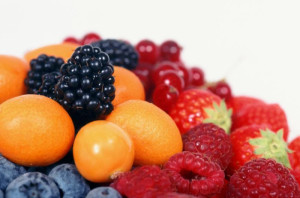Hormonal Changes and Age
Both men and women  experience changes in hormone production starting anywhere from mid-thirties to late forties and beyond. Menopause aka “the change” is well-know and expected for women surrounding the age of 50. However more and more information and research is being done regarding the change in men’s hormone productions, specifically testosterone, and has been named andropause. Androgens are the male-associated hormones testosterone and DHEA primarily. it is important for both men and women to know that you don’t have to suffer! Hormones can be balanced, increased and decreased with diet, lifestyle, supplements and bio-identical hormone replacement therapy.
experience changes in hormone production starting anywhere from mid-thirties to late forties and beyond. Menopause aka “the change” is well-know and expected for women surrounding the age of 50. However more and more information and research is being done regarding the change in men’s hormone productions, specifically testosterone, and has been named andropause. Androgens are the male-associated hormones testosterone and DHEA primarily. it is important for both men and women to know that you don’t have to suffer! Hormones can be balanced, increased and decreased with diet, lifestyle, supplements and bio-identical hormone replacement therapy.
For men, testosterone levels can vary throughout life at different ages. Confidence, drive, sexuality, skin appearance, hair line (or hair loss), prostate health and cardiovascular health are all aspects that testosterone influences. When levels of testosterone or it’s derivatives are low, many aspects can be affected. Sometimes test results will show that there is an excess of hormone conversion (eg. to estrogen or DHT). Urinary or salivary male hormone profiles give the complete picture and identifies hormonal deficiencies which can be corrected with diet, lifestyle and supplementation.
For women, peri-menopause signifies the decline of fertility and thus fluctuations in hormone levels. Periods may become irregular, lighter or heavier and can be accompanied by new or worsening of symptoms such as cramping, breast tenderness and mood changes. It is not until 1 year has passed without a period that the term menopause is used. However, during the peri-menopausal phase, women can begin to get hot flashes, night sweats, brain fog, depression, weight gain, vaginal dryness, loss of libido, fatigue etc. Considering that this could be a 10-year or more journey, diet and lifestyle should work towards optimal health which will reduce hormonal symptoms. For example, we know that excess hormones such as estrogen are broken-down in the liver and excreted through the bowels. As estrogen levels rise, symptoms such as heavy periods with short cycles and painful cramps can dominate. In order to help the body rid itself of these excess hormones, these dietary and lifestyle tips can help:
- Remove any known allergies or sensitivities from the diet (or consider doing a food sensitivity test). Good gut health will enable excess hormones to be excreted
- Take a good-quality probiotic for the same reason as above. Multi-strained, human micro flora at least 10-15 billion per day is a good place to start
- Exercise for at least 30-45 minutes 3 times per week. Fat cells store extra hormones so often weight loss can lead to a decrease in symptoms. A mixture of cardio and weight in the form of interval training is recommended
- Reduce stress in your life. High cortisol which is our active stress hormone will influence sex hormone production. Cortisol levels have a huge role in the body’s intricate hormone balancing system
- Reduce refined sugar, high carb meals, alcohol. Increase healthy fats such as avocado, nuts, seeds and coconut oil which contribute to hormone synthesis
Supplements and cleanses can improve the liver’s ability to detoxify the body. The best cleanses are food-based, those that reduce the “unhealthy foods” and focus on the highest quality options. A 3-week liver tune-up cleanse coupled with a few potent liver herbs and supplements can make a big difference. Individualized treatments and post-cleanse protocols will help further balance and are developed based on test results and symptoms.



